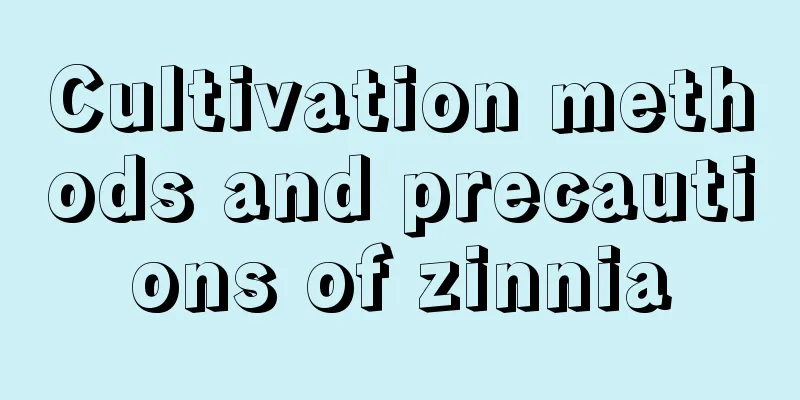Cultivation methods and precautions of zinnia

How to grow zinniaWater and fertilizer managementWatering: Due to the high light demand, water evaporates easily, so it is necessary to maintain proper humidity at all times. Water every day in summer. Fertilization: Apply 2-3 grams of compound fertilizer to the bottom of the pot when transplanting. After transplanting, use 800 times diluted dichlorodiphenyltrichloroethane to irrigate the roots for disinfection. The soil in the pot should be kept moist within 1 week after planting to promote the growth of surface roots. When the roots grow to the bottom of the pot, you can start applying fertilizer 2-3 times a week (apply water-fertilizer on sunny days, and control the concentration within 200mg/kg. Apply granular fertilizer 2-3 grams/pot on rainy days). You can also apply calcium fertilizer once. Temperature and lightTemperature: Zinnia prefers warm and sunny weather and cannot tolerate high temperatures and severe cold. The suitable temperature for its growth is 18-20℃ during the day and 15-16℃ at night. Growth is particularly rapid in summer. Lighting: Full sunlight can be used directly. If there is insufficient sunlight, the plant will easily grow too tall and its resistance will be weaker, and its flowering will also be affected. Things to note when raising zinniasPlant shapingIf zinnias are not topped, the plants will have too few side branches and few flowers. Proper topping can promote dwarfing of the plants and increase the number of flowers. When the seedlings grow to 4 leaves, transplant them and pinch the tops to promote the growth of lower branches to form a better plant shape. Start pinching the tops one week after transplanting, leaving 4 pairs of true leaves, and decide whether to pinch again depending on the growth and branching of the plant. During the flowering period, continue to add potassium dihydrogen phosphate and other phosphorus and potassium fertilizers to promote the continuous growth of flower heads. After the flowers wither, the dead flower heads should be cut off in time to reduce nutrient loss. Pest controlCommon diseases of zinnia: white star disease, black spot disease, mosaic disease Zinnias also need to be prevented from growing too tall. Zinnia seedlings are very prone to growing too tall during the growth period. Pay attention to lowering the weeds, pinching the tips, and watering less. |
<<: Maintenance methods of five-color plum in four seasons
>>: Evening primrose cultivation methods and precautions
Recommend
How to grow carnations until they overflow the pot?
Dianthus is actually a herbaceous plant. Its flow...
Is Kalanchoe poisonous? How to grow it indoors?
1. Is it poisonous to keep it indoors? This type ...
Miniature bonsai cultivation techniques
Miniature bonsai needs to deal with branches and ...
The efficacy and function of green jujube
1. Protect the liver The trace elements contained...
How to care for potted roses in winter
Are potted roses afraid of freezing? Potted roses...
When is the best season to plant ginger in the north?
Ginger is mostly cultivated as an annual in China...
The wild vegetables in the field are fresh and tender, nutritious, delicious and healthy!
Shepherd's Purse Shepherd's purse is one ...
How long does it take for Photinia fraseri to take root?
Rooting time of Photinia fraseri cuttings The tim...
How to divide orchid seedlings and when is the best time to divide them
1. Seedling division method 1. Stop watering the ...
How to grow crabapple flowers and when will they bloom
1. Maintenance methods 1. Light: It has poor shad...
When is the best time to transplant ground-planted peonies?
Before transplanting ground-planted peonies, you ...
What kind of water is best for watering Jade Plants (what kind of water is suitable and nutritious)
The first type: manure organic fertilizer Collect...
Is it good to grow orchids at home? Why can't orchids be grown at home?
1. Is it good to grow orchids at home? It is very...
How to prune a small fortune tree
1. Pruning time It enters a period of vigorous gr...
Common varieties of Bauhinia
Bauhinia leucophylla White Bauhinia is a variant ...









